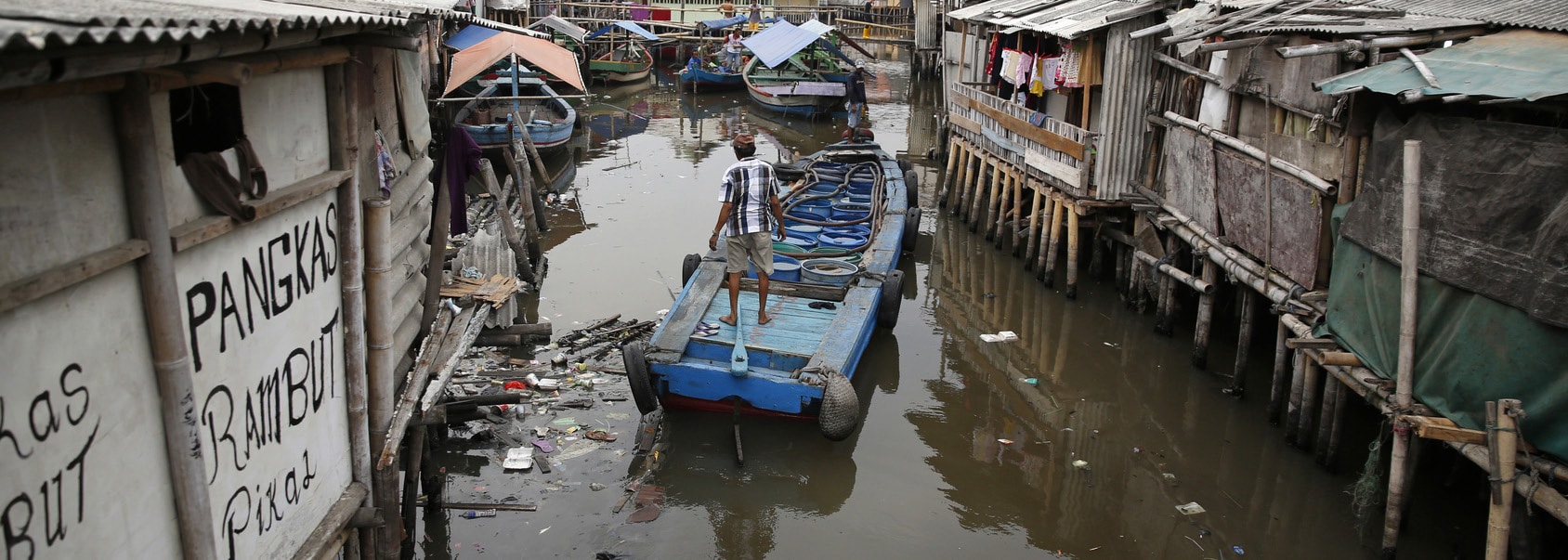The Situation
Shifts in tectonic plates, geological faulting and soft clay geology have long been contributors to the abiding problem of subsidence, but water security is adding its own complications.
For example, the combination of excessive groundwater extraction and increasingly heavy construction has doomed Jakarta, Indonesia, to be the world’s fastest sinking city – 2.5 metres (8 feet) in the last 10 years and 25cm (9.8 inches) a year in some parts.
There is no reliable source of piped water, so a thirsty population pumps it from deep aquifers setting off disastrous results. Meanwhile, lax regulations fail to control the problem, with just about anyone able to carry out their own groundwater extractions, from individuals to massive shopping malls.
The issues for these coastal cities is made worse by the rising sea levels due to climate change, and Jakarta isn’t the only one in crisis.
The National Reform Council’s committee recently warned that Bangkok could soon be submerged if more corrective action wasn’t taken. They reported that ground water extraction was contributing to nearly 70% of its subsidence.
On the other side of the globe, Mexico City, Louisiana and Las Vegas are well known case studies of sinking cities. With a huge population of more than 8 million people, Mexico City is subsiding on a grand scale – more than 9 metres (30 feet) in the last hundred years.
The Impact
Without action the impact will be devastating; millions of homes underwater and entire city populations displaced.
Some models predict that 95% of North Jakarta will be submerged by 2050, and it’s already possible to find abandoned office buildings with ground floors awash in stagnant water. With 1.4 million people living in North Jakarta alone, this is no small problem for the Indonesian government.
In addition to ground subsidence, Bangkok also faces land erosion – up to 4 metres (13 feet) a year in some areas of coastline, due to changes in climate such as higher tides, more ferocious waves and monsoons. Coupled with land clearing for development, this has wiped out the mangrove plantations, forcing inhabitants to move further inland.
Coastal erosion has also troubled Louisiana, though here the problem is so extensive, the loss equates to the disappearance of 65km2 (25 square miles) of wetlands each year. That’s a football field sized area every 30 minutes.
The Geology
“Each city has its own geological make up”, says Seequent’s Head of Sustainability Thomas Krom, “and this causes groundwater extraction subsidence to manifest differently in every place.”
A 2015 academic paper1 identified Mexico City as being located above a sequence of deformable unconsolidated lacustrine sediments interlayered with strong volcanic rocks. Combining these natural conditions with massive groundwater extraction, sunk the city unevenly, at rates from 0 to ~370 mm/yr (1.2 feet).
In Las Vegas Valley nearly all the groundwater supply comes from a zone of confined and semi-confined principal aquifers at depths of 200-300m (656-984 feet). Since 1968, annual withdrawals have been gradually reduced (in 1991 the water district began re-injecting water into the subsurface) but have consistently exceeded natural recharge levels by factors of two to three. As a result of continued long-term overdraft, water levels have declined more than 90m in some portions of the valley.
What could be done
Tighter regulations could slow the groundwater extraction and reduce the risk of subsidence, believes Thomas.
For example, the Thai government banned groundwater extraction 38 years ago, helping to slow Bangkok’s subsidence to 1cm (0.39 inches) per year. But recent droughts have forced people to ignore the ban.
A 32km (20 mile) outer sea wall across Jakarta Bay could create an artificial lagoon, which the city’s rivers could drain into. However, there is no certainty the $40bn project would provide a permanent solution. It’s an interim measure only, says Jan Jaap Brinkman, a hydrologist with the Dutch water research institute Deltares, and will buy Jakarta no more than an extra 20 to 30 years.
References
1 – Solano Rojas, D. E.; Wdowinski, S.; Cabral, E.; Zhang, Y.; Torres, Y





